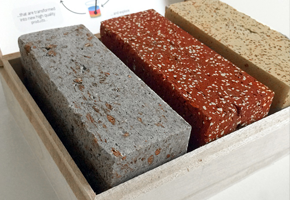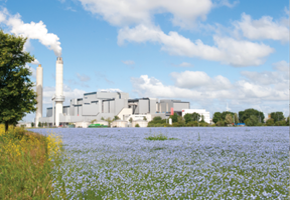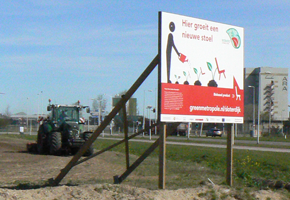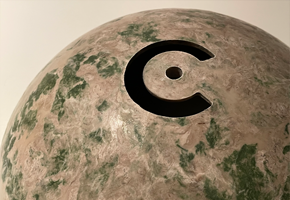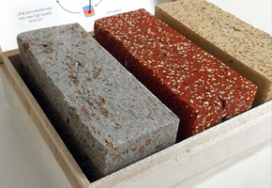
WasteBasedBrick
Bricks made from 100% waste material
Tom van Soest, the Chief Creative at StoneCycling is the godfather of the WasteBasedBrick. This is a new and sustainable brick made from natural and industrial waste. StoneCycling believes in a circular world. The primary input for new building materials can and should be waste materials. With the WasteBased-Brick, Tom is a frontrunner in the movement towards a circular building industry.
StoneCycling is well on its way to becoming a major new player in the surface material market. Those architects and real estate developers with a penchant for something new and a taste for Aubergine, Truffle or Mushroom should especially take note, as these are names of various types of WasteBasedBricks.
And that’s not all: perhaps your own waste could lead to something new. With his ‘Your waste, your brick’ principle, Van Soest is motivating property owners, municipalities and architects to develop a WasteBasedBrick together with him. This can lead to surprising opportunities and designs. It also increases owner awareness of the potential value waste has.
More information: www.stonecycling.com

Steven Spanjersberg
Hempcrete
Architect Steven Spanjersberg has designed a home constructed with hempcrete, a mixture of natural hemp plant fibres, water and chalk. The structure consists of arc-shaped hemp concrete wall elements, 35 cm wide, which can be placed on a basic foundation as a result of their extremely low specific weight (unit weight).
In addition to the low specific weight, the excellent thermal and acoustic characteristics are an important advantage of the material. Hempcrete buffers temperature and air humidity, is fungicidal, and turns a building into a comfortable and sound environment.
Hemp is a fast-growing crop that purifies the air by converting large quantities of CO2 as it grows. Hemp can reach heights of up to 4 m within a period of 100-120 days. Hempcrete’s CO2 absorption during the entire life cycle of the building can even result in the building ultimately achieving a negative CO2 footprint. Moreover, hempcrete is a very cost-efficient material. In all respects it is a truly wonderful eco-product.

City of Amsterdam
Urban Solution Sloterdijk III
The City of Amsterdam has joined forces with Waternet and RVR Hoofddorp to use part of their construction-ready land in Amsterdam Sloterdijk III temporarily for the cultivation of crops that serve as raw material for local manufacturing of sustainable products. They work in collaboration with Schiphol that provides land for the same purpose.
In 2014 and 2015, for instance, the land was planted with hemp, linseed and primrose. The yield of the various parcels of land is sold upfront to sustainable regional companies. RIGO Paint, for example, purchase the linseed oil using it to develop a sustainable paint for local production. Moreover, the fibres of the different crops were used as basic material by NPSP Composites in the manufacture of a variety of products, with applications ranging from tables and chairs to scooters, boats and car doors.
More information:
www.innovatie.waternet.nl/projecten/vlas-en-hennepteelt-op-braakliggende-terreinen
www.rigoverffabriek.nl/innovatie-ontwikkeling/hier-groeit-verf-2

Province of Noord-Holland
Aquatic Plants as a Sustainable Raw Material for Design Products
The Dutch Lake District is expected to experience explosive growth in waterweed and Cabomba. Waternet currently plans on intensive mowing in the coming years. The volume of dry plant material generated (5000 kg per mowing session per hectare) is too large to leave behind or to remove by road. Therefore, Waternet is studying how to deal with it to maximise sustainable use, either as biofuel or as raw material for sustainable products. Architect Gert Jan Scholte and NPSP have been working on a research project with Waternet using aquatic plants as a sustainable raw material for bio-composite design lamps. The research has been made possible with financial support from the Province of Noord Holland.
